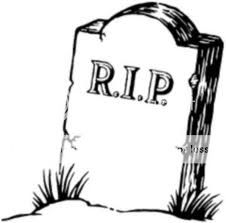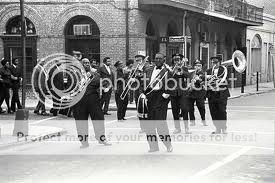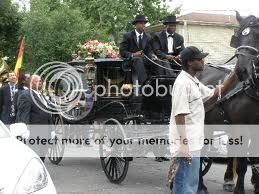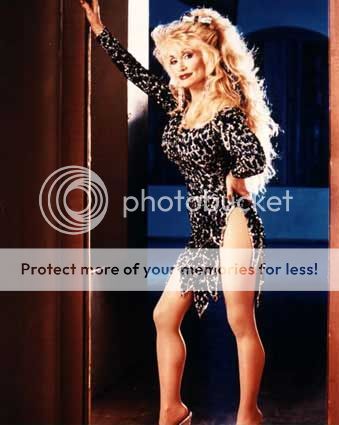Forum Replies Created
-
AuthorPosts
-
in reply to: Calculating FOC: question for Dr. Ashby #42070
David Petersen wrote: I guess I can honestly say that I have 23.73% FOC with wood shafts and 300 Tuffheads, which–given the limits on wood shaft weight vs. spine, and the difficulty Fletcher had in finding just nine shafts (took months of saving them back)that would give 85# spine in a relatively light shaft (average about 410), I don’t think we’re going to do much better with woods. If I don’t break them all in practice, I plan to kill an elk with this set-up this year and predict a full pass-through, though 23/64 shaft diameter is a disadvantage over skinny carbons.
Coincidentally, Fletcher fletched these with 4×2″ feathers, my first experience with four-fletch, and I’m so please I plan to make it my norm henceforth–though it might be tough getting four feathers on a skinny carbon shaft.
That sounds like an AWSOME wood shaft EFOC setup. I’m anxoius to see the outcome on your next elk. I THINK the large ferrule on the Tuffhead will negate much of the negative effect of the larger shaft diamater. It will be interesting to find out.
Ed
in reply to: Arrow specs and charts… NEED HELP #42065Coming up with a chart is going to be difficult, Joe, because there are so many variables and one cannot go just on draw length, draw weight and point weight. For example, take two identical traditional bows but put a thin arrow plate on one and a thicker arrow plate on the other – or even the same thin plate on the other except with a piece of toothpick, a match stem or a piece of leather boot lacing beneath the thin plate – and you end up with two bows that vary greatly in the degree of centershot and that can significantly change the shaft that will tune. It becomes even harder when we look at the huge variance in the degree of centershot on trad bows.
Shaft diameter also affects the selection. A small diameter shaft, like the Victory, sits closer to the riser and needs to be stiffer than a similar shaft having a larger diameter, such as a GT Ultra Light.
What we really need is for every producer of shafts we’re commonly using for EFOC/UEFOC arrows to offer single shafts for tuning purposes. Then we could buy the two or three shafts likely to tune and work with them to find the correct shaft. Lots of luck getting that done.
An interesting sidelight is that a true centershot situation, with the center-line of the arrow shaft precisely in line with the string, requires a VERY stiff spined shaft and is very difficult to tune. At ‘dead center’ the shaft does not know which direction to try to flex first, to the left or right. On one shot its initial flex might be away from the riser and the next time it may try to flex towards the riser, causing it to bounce away from the riser. With any true centershot bow I’m trying to tune, whether a traditional bow or a compound, the first thing I do is move the arrow at least a little bit away from true centershot. It makes the tuning far easier.
Ed
in reply to: Calculating FOC: question for Dr. Ashby #38617Here’s about the best I can explain what we are measuring. I hope it clarifies the question.
No matter which measuring method is used it is imperative to remember one is only getting a relative number. What we measure is not the true FOC. The true FOC depends on the location of the Center of Pressure (CP) on the arrow in flight, in relation to the center of mass (the Gravitational Center). It has nothing at all to do with to do with projectile length. Our main need in measuring “relative FOC” is a method to be able to duplicate an arrow setup.
A good analogy is with the static spine. Why do we measure it at 26” or 28” between centers? Why not measure it at the full length of each shaft? The answer is simply that it doesn’t make any difference what method we measure it by, because it only measures relative stiffness, not the actual dynamic spine the arrow will show when shot. All we need to know to duplicate an arrow is the relative relationship, one shaft to the next. It’s the same for FOC.
We generally do the initial development of our EFOC arrows with something other than a broadhead, then changing over to a broadhead of the same weight. If we measure the FOC using the overall arrow length we are going to have two arrows that shoot the same but have different measured, “relative FOC’s”. Going back to our static spine example it would be like using the traditional 26” or 28” on-center static spine measurement while developing our arrow then, once finished, going back and measuring the static spine using the actual length of the arrow and then stating that as the measured static spine. What actual purpose does it serve? None. All it does is add a layer of confusion.
Similarly, I think measuring the FOC using the overall length merely adds a layer of confusion, where the same arrow setup, with the same point weight shows two different “relative FOC’s” depending on the length of the point. For purposes of duplicating the arrow we don’t really need that information.
It really makes no practical difference which method is used but if one states the FOC of their arrows with broadheads in place, using the overall length, then someone trying to develop an identical arrow, having the same FOC, they will have to ether do the development with a broadhead or periodically take their field point off and stick a broadhead on the shaft to see what the FOC measures. Just seems like unnecessary complication to me.
Though not directly related to how we measure our ‘realative FOC’ I will add (and I HOPE this does not add to any confusion) what MAY help with understanding FOC. The Center of Pressure (CP) is that point along a projectile in flight where the air pressure forward of and posterior to it are equal. The farther the CP is behind the Center of Gravity (GC) the more stable the flight. By moving weight forward on the arrow we are trying to increase the distance between the GC and the CP. The other way we can increase true FOC is by increasing fletching size; but there are downsides to increasing fletching size.
It’s important to realize that the ‘true FOC’ is dynamic; it changes during flight. Our goal is to maintain the highest possible level of true FOC throughout the arrow’s flight; we want the highest ‘AVERAGE TRUE FOC’ from the instant of arrow launch until the arrow stops all forward movement – even during penetration. The big advantage of increasing FOC by moving the weight forward, rather than increasing fletching size, is that the effect remains more of a constant during flight. Fletching’s effect on FOC is nearly nonexistent at the instant of launch, at its maximum at maximum arrow velocity, and diminishes as the arrow slows.
Increasing the size of fletching on an arrow increases it’s stability in flight because it increases the air pressure on the arrow’s rear, which also increases the distance between the GC and CP. The downsides of using increased fletching to get increased ‘true FOC; in flight are: (1) it slows the arrow; (2) the effect is not present at the instant of arrow launch; it comes into effect as the arrow begins to move forward and increases as the arrow accelerates (and decreases as the arrow slows down); (3) it takes longer for it to overcome arrow paradox than does having a higher FOC resulting from increased weight forward and, (4) because the arrow has slowed dramatically it has virtually no beneficial effect on on ‘true FOC’ during tissue penetration.
Ed
in reply to: "New Bad Boy in Town" #10854
Rising from the ashes
in reply to: "New Bad Boy in Town" #10610
‘Served a Na’Leans send off.

 in reply to: "New Bad Boy in Town" #9320
in reply to: "New Bad Boy in Town" #9320
Setting the benchmark for UEFOC? I think it should be callied the “Dolly”. 😀
in reply to: Noteable Quotes! #9283The truth is incontrovertible. Malice may attack it, ignorance may deride it, but in the end, there it is. – Winston Churchill
in reply to: "New Bad Boy in Town" #9275
Just how big is it?
in reply to: "New Bad Boy in Town" #9265 in reply to: "New Bad Boy in Town" #9264
in reply to: "New Bad Boy in Town" #9264 in reply to: "New Bad Boy in Town" #9239
in reply to: "New Bad Boy in Town" #9239
I’m not nearly as crazy as I thought I was!
in reply to: Need help with carbon arrow selection #8267Troy Breeding wrote: Different bows will tune differently.
And that’s the most important thing to keep in mind, and I’ll add to it that a bow/arrow-setup that is tuned perfectly for one shooter may not be perfectly tuned when another shooter uses it. Things like quality of release and hand pressure on the bow do make a difference in the tuning. Tuning without a bow quiver and then attaching a bow quiver can alter the tuning too. I even heard it said, but have never tested it, that even the number of arrows in a bow quiver can alter tuning. If you use a bow quiver, the safest approach is to tune with the bow set up exactly as you intend to hunt with it.
Ed
in reply to: Noteable Quotes! #8197Genius may have its limitations, but stupidity is not thus handicapped. – Elbert Hubbard
in reply to: Joe and Steve Sr. #8189Talked to Joe on the phone and got the latest. The initial post-surgery lab results are looking very favorable. The surgery was pretty major, so just recovery from that will be an ordeal. We’ll know more as time goes on.
Steve Sr. just seems to have disappeared. I sure hoipe all is okay.
Ed
in reply to: A&A Fletching #8186Bryan, the A&A pattern is so simple that I cut mine from full length feathers using just a pair of quality scissors and a plastic template I use for a guide. It’s just two straight cuts.
A&A stands for Adcock and Ashby. After much research, trial and error, O.L. developed the concept for the high FOC flight arrows he was shooting (and using to set more than two dozen world flight records, in an unbroken string of consecutive tries). I got to wondering how an over-size version would work on the EFOC/UEFOC hunting arrows, so up-sized the concept, played around with the turbulator placement (finally coming up with the exact same placement as O.L. had determined for his flight arrows) and this is how the A&A pattern was developed.
Here’s the link to the thread with the A%A fletching segment
video from Kalamazoo.
https://www.tradbow.com/members/cfmbb/messages.cfm?threadid=FA8F1DC9-1422-1DE9-ED0EAC94FC3FF74A
Ed
-
AuthorPosts

